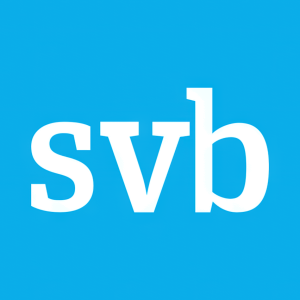Silicon Valley Bank Releases Annual State of the US Wine Industry Report
On January 18, 2023, Silicon Valley Bank released its 2023 State of the US Wine Industry Report, indicating mixed fortunes for the wine sector. While the premium segment saw an average revenue increase of 9.7% through September 2022, overall sales volume in the US wine industry is in negative growth due to plummeting demand for lower-priced wines. The report highlights a strong reliance on older consumers, with younger demographics showing diminished interest in wine. Challenges such as economic conditions, climate change, and supply chain issues are impacting winery sentiments. A live webinar discussing these trends will take place on the report's release date.
- Premium wine sales increased by an average of 9.7% through September 2022.
- The premium wine business continues to deliver excellent growth and returns.
- Overall US wine sales volume is experiencing negative growth.
- Younger consumers show even less interest in wine compared to 2007, worsening adoption concerns.
- Economic conditions, labor costs, and climate change negatively impact winery sentiment.
- Winery margins are projected to erode in 2023 due to rising operational costs.
US Wine Industry Enters Negative Growth Phase; Adoption by New and Younger Consumers Is Lagging
While the premium side of the wine industry experienced another strong year amidst an increasingly challenging marketplace – with revenue on average up 9.7 percent through
"The positive growth in premium wine sales is expected to continue into 2023, tempered by the shadow of demand concerns due to the lack of adoption by consumers younger than 60," said McMillan. "Concerns about alcohol on health, difficult global economic conditions and the growing influence of climate change is impacting consumer behavior. It's late in the game, but there is still time for the industry to come together to solve the demand issues plaguing the category and improve the trajectory of consumer adoption of wine."
- The premium wine business continues to deliver excellent growth and returns.
- For the industry as a whole, sales volume is expected to stabilize in 2023 at current levels.
- Wine consumption is growing primarily among consumers over 60 years old. Positive industry sales growth in the future will be dependent on meaningful action taken from within the wine industry to attract younger consumers, who increasingly choose spirits, beer, alternative beverages, or alcohol abstinence over wine.
- The economy, labor availability and costs, alternatives to wine, and water availability are negatively impacting winery owners' overall sentiment on current business conditions.
- Entering a recession with excess wine inventory leads to rapid discounting. While a recession is top of mind for many, should that happen the wine industry is well prepared to weather the storm thanks to three consecutive years of lower yielding harvests.
- When results of the 2022 harvest size are announced in
March 2023 , a third consecutive light crop year inCalifornia will likely be reported, with the crush predicted to come in at 3.7 million tons, slightly larger than the 2021 harvest. - At the end of 2022, overall supply is balanced in
California . Absent impacts from climate change, grape and bulk prices will remain stable at present levels in 2023. - A larger 2023 harvest is likely given improved soil moisture from recent rains. A larger yielding harvest may be unwelcome given current weakness in demand.
- In
California andWashington new plantings will be few and non-speculative. New plantings are expected to continue inOregon , but at a slower pace.
- Older consumers continue to have a positive impact on wine sales, with share of spend in the 70-to 80-year-old age band growing, even as this population declines.
- Engagement with younger consumers by the wine industry has proven unsuccessful to date. In fact, consumers below 60 years old are even less interested in buying wine today than they were in 2007.
- The trend of extensive beverage menus in restaurants versus dedicated wine lists will continue to expand, reflecting the rising demand for spirits, alternative beverages and better-for-you offerings.
Price
- 2022 bottle pricing dynamics is expected to continue into 2023, with 47 percent of survey respondents noting they will make small bottle-price increases in 2023.
- Those making lower-price wine will likely have difficulty passing through the cost of inflation, but less resistance to passing on some small price increases in the premium market is expected.
- Winery margins are expected to erode in 2023 as higher costs of labor, insurance, bottles, materials and shipping continue.
- Climate change is impacting growing conditions, causing some of the cost increases, with 53 percent of survey respondents reporting moderate or worse impact as a result of climate change.
- Thirty-nine percent of survey respondents note an increase in insurance premiums and a decrease in coverage. Three percent of survey respondents could not obtain insurance at any price.
Read the full 2023 State of the Wine Industry report here: www.svb.com/trends-insights/reports/wine-report.
Founded in 1994,
![]() View original content to download multimedia:https://www.prnewswire.com/news-releases/silicon-valley-bank-releases-annual-state-of-the-us-wine-industry-report-301724419.html
View original content to download multimedia:https://www.prnewswire.com/news-releases/silicon-valley-bank-releases-annual-state-of-the-us-wine-industry-report-301724419.html
SOURCE
FAQ
What is the current state of the US wine industry according to the 2023 report?
What revenue growth did the premium wine sector experience?
What demographic shows the most growth in wine consumption?
What are the major challenges affecting the US wine industry in 2023?








